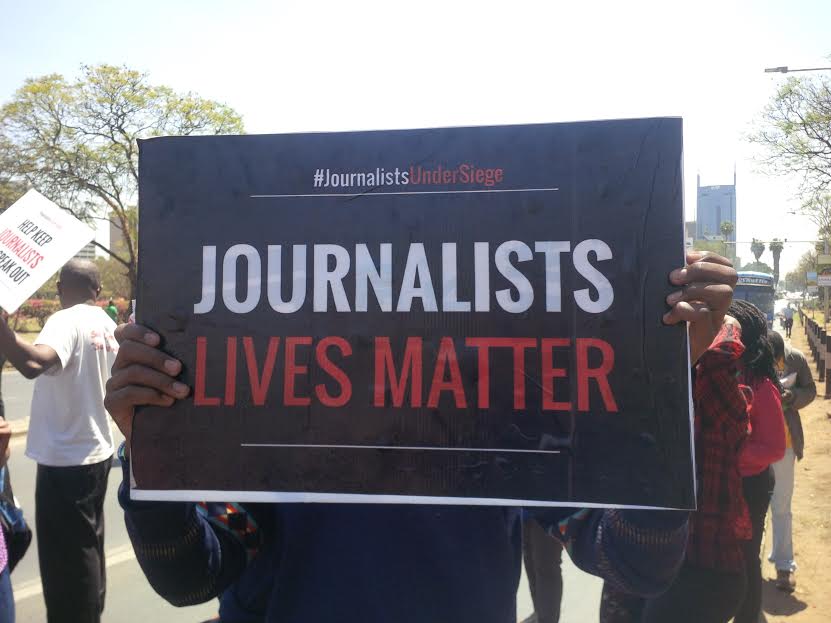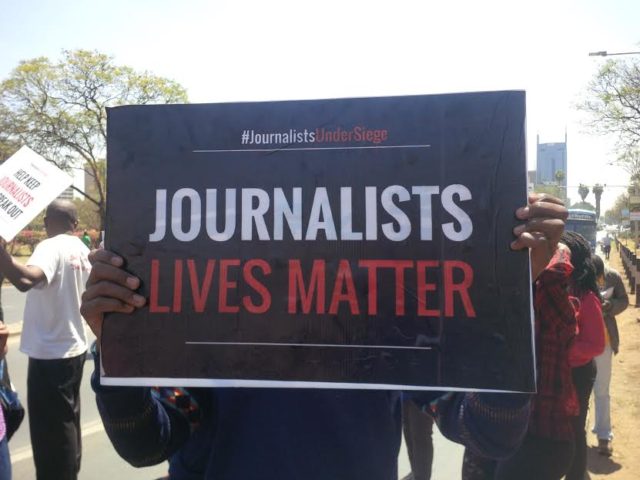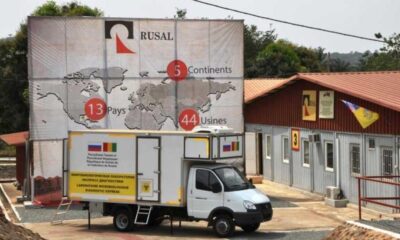Democracy & Governance
2018, A Deadly Year For Journalists -By Labaran Yusuf

Even though the journalism profession has always been a risky one, the year 2018 is so far the worst year on record for journalist killings, new reports indicate. This comes as journalism watchdog groups warn of the increasingly worrying trend face by journalists around the world including growing threats, intimidation, detention and violence.
Reporters Without Borders, a Paris-based media watchdog that advocates for political freedoms found out that at least 80 journalists were killed this year. A further 348 are currently imprisoned – with more than half held behind bars in Iran, Saudi Arabia, Turkey, Egypt and China, the world’s biggest jailer of journalists – often on charges of opposing the state, while another 60 are being held hostage, according to a report released by the watchdog earlier this month.
Although slightly lower, data from the New York based organization defending the freedom of the press, Committee to Protect Journalists (CPJ), corroborates that of the report.

Journalists on the frontline in areas of long-running conflicts like Afghanistan, Iraq, and Syria remain the most vulnerable – as they are usually caught in the line of fire. War-torn Afghanistan predictably was perhaps the world’s deadliest country for journalists in 2018, with 15 killed. In one militant attack alone, nine reporters including AFP’s chief photographer in Kabul Shah Marai were killed in the Afghan capital back in April.
Afghanistan was followed by Syria (11 killed) on the list and Mexico (9 killed), the deadliest country for journalists outside a conflict zone. Reporters who expose organized crime are often killed in the country in acts of gruesome violence perpetrated by drug cartels and corrupt government officials. Yemen in the midst of civil war came fourth with eight journalists killed while the United States, with six journalists killed in 2018, for the first time ranked among the top five deadliest countries in 5th position alongside India.
In turn of events this year, journalists in the US and Europe – traditionally safe for journalism practice – have fallen victim to targeted killings. In the US, five employees were shot dead in a June attack on The Capital Gazette newsroom in Annapolis, Maryland, by a gunman who accused the paper of defamation. In Europe, Slovakian investigative journalist Jan Kuciak and his fiancée were shot dead in his apartment earlier this year. Kuciak covered tax evasion and fraud and had been investigating the links between the Italian mafia and Slovakia’s governing party.
But Jan Kuciak wasn’t the only journalist killed in Europe for doing his work. In October last year, prominent investigative reporter Daphne Caruana, who had written reports about the Panama Papers tax avoidance scandal, was killed in a car bombing in Malta. While in October this year, Bulgarian presenter Viktoria Marinova was beaten, raped and murdered. Her colleagues say they believe her investigation into corruption of officials led to her death.
The most brazen act of violence against journalists this year – that sparked international condemnation – came in the murder of prominent Saudi journalist and insider-turned-critic Jamal Khashoggi. He entered the Saudi consulate on October 2 to obtain divorce papers and never reemerged. After weeks of silence, lies and conspiracy theories, Saudi Arabia finally admitted he was murdered by what it called “rogue agents”. But evidence presented by Turkish authorities detail how the journalist was tortured, killed, dismembered and then his body dissolved in acid by a 15-man murder squad on orders of Crown Prince Mohammed Bin Salman.
A former royal court adviser, Khashoggi fell out favour and left the Kingdom in June 2017 fearing retribution to live in self-imposed exile in Washington – where he began writing critical columns of the new Crown Prince’ policies such as the war in Yemen for the Washington Post.
Other journalists around the world suffered different fates. According to the CPJ, two Reuters’ reporters Wa Lone and Kyaw Soe Oo are imprisoned in Myanmar, after they’ve been set up by the police and later charged under the obscure colonial-era Official Secrets Act with “illegally acquiring information”. The pair reported extensively on last year’s military campaign of violence and expulsion – or what the United Nations called a “textbook example of ethnic cleansing” against the country’s Rohingya Muslim minority.
In Nigeria, where investigative reporting can be a life or death affair, Jaafar Jaafar, the publisher of online publication Daily Nigerian has to go into hiding in October, following alleged threats to his life. Jaafar released videos allegedly showing Kano State governor Abdullahi Ganduje receiving bribes from contractors. Other Nigerian journalists have reported harassment by security forces.
Although Khashoggi, the slain reporters at The Capital Gazette, and the imprisoned Reuters journalists were featured as Time Magazine’s Person of the Year, anti-press rhetoric and vilification by leaders like president Trump – that creates more pressure and an environment where the killings of journalists flourish – must stop, as the CPJ noted.
Journalists must be able to practice their profession without threats, pressure and intimidation. They should be allowed to remain what they are: a voice for the voiceless – that tells truth to power.
Labaran Yusuf is a freelance


















